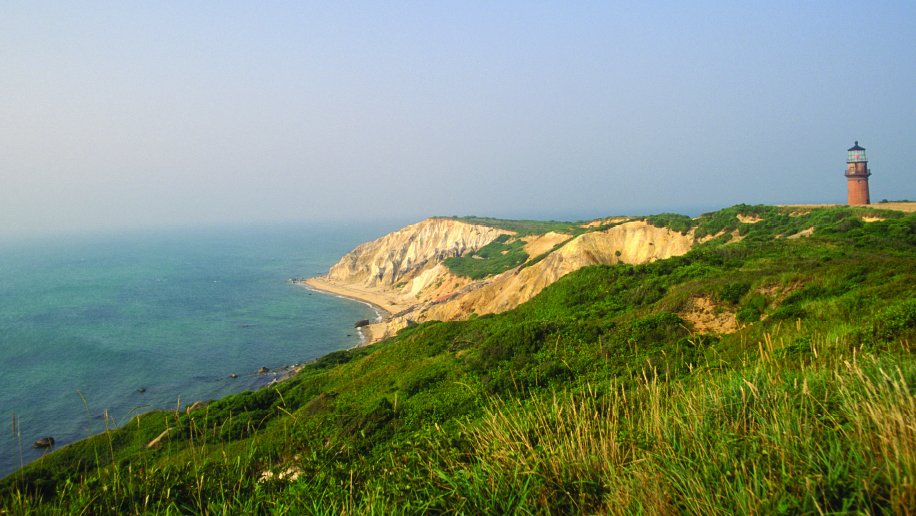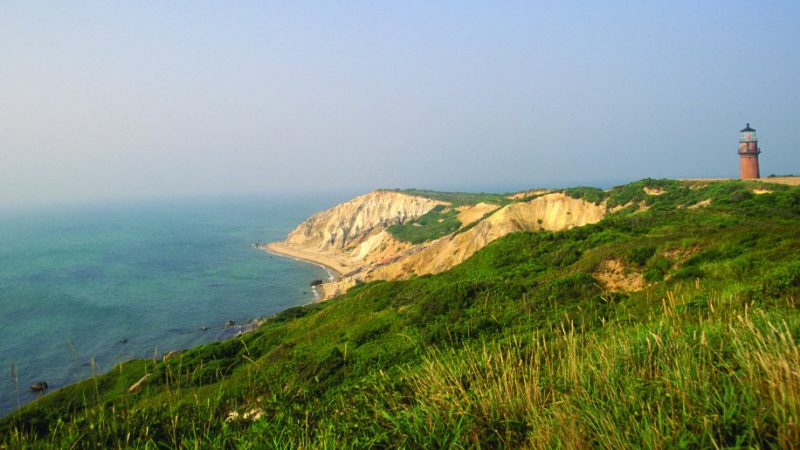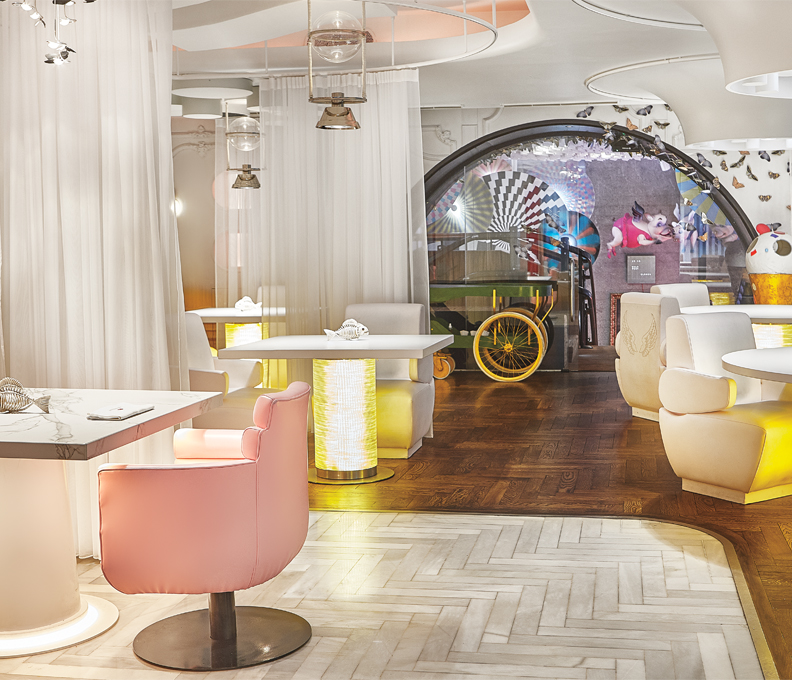Looking for New England
With its intriguing history, wild natural beauty and excellent food and drink, Cape Cod’s appeal is all-embracing
February 28, 2019

A lengthy spit of sand and hollows jutting into the Atlantic, Cape Cod has long been a place of ebb and flow. The landscape itself seems transient, the shores of breezy dunes and freshwater kettle ponds constantly shifting their boundaries. Created from piles of glacial moraine as the last ice sheet receded, its days are numbered; it now has less than 5,000 years to go before the ocean consumes it.
But right now, it’s New England’s vacation destination for visitors of all stripes – non-stop partying weekenders from Boston and New York, beachcombing families from New England, and plutocrats and presidents who jet in from Washington to their compounds, a tradition begun by the Kennedys. Cape Cod and its two islands – Martha’s Vineyard and Nantucket – is a place where you come to meet people, but also to escape; to eat the seaside dishes our grandparents ate, but also to push out the boat with some cutting-edge cuisine.
Most striking of all, though, is the light and the scenery; mile after mile of white sand beaches, backed by the bleached-bone white of clapboard houses and weathered cedar shingles. Eventually you get to Provincetown at the very tip, where the Mayflower first landed before moving on and leaving it for the Nauset Indians.
The European settlement of the Upper Cape came much later. “Since the 19th century, American artists, from the amateur to the avant-garde, have been drawn to Provincetown as a site of inspiration,” says Christine McCarthy, executive director of the Provincetown Art Association and Museum. “The reasons for that are many and complex. However the lure of the sea and the desire to experience its natural beauty are certainly at the forefront.”As McCarthy explains, “This spit of land serves as a haven for all that is creative and unique, spiking at 100,000 visitors in the summer months, which drops to 3,000 year-round residents during the off season. For those who are lucky enough to call Provincetown home, the off season is magical.”
Magical indeed. My first visit was 20 years ago, with a new American girlfriend who wanted to show me her childhood holiday spots. I was bowled over by the beauty of the historic Cape buildings, the dazzling beaches and the chumminess of the locals. We returned the following year. I was introduced to her family. Eventually, we married.
We’ve been going there nearly every year since – most recently with my extended US family – each season exploring something new: the seafood, the craft brewery bars, the cycle tracks, the secluded walks, the islands. We’ve researched buying a home and moving there, and we may do yet. The winters might be tough, but the summers are long and idyllic, making the Cape hard to resist. Modernism & Beach Homes Provincetown might be a tourist honeypot during the summer, but its hinterland is still remarkably unspoiled. The Outer Cape, as this furthest reach is called, began attracting summer visitors for its isolation and wild beauty during the 1930s. Momentum grew as Boston bohemians bought land cheaply during the Depression years, and fixed up shacks as summer homes.
Then things took a rather different direction in the summer of 1937, when Walter Gropius, founder of Bauhaus and then a recently appointed professor at Harvard University near Boston, stayed on the Cape and hosted a reunion of European émigrés who had fled the Third Reich. He started a trend. This community returned for summer vacations. These modernist architects and artists began building beach homes on the shores around Wellfleet, while building was relatively unrestricted. Some of these homes have been acquired and carefully restored by the Cape Cod Modern House Trust (ccmht.org), a small charity that rents the properties out by the week during the summer.
“There was a flourishing of innovative modernist architecture, built as experiments. The peak of this was in the 1940s and by the 1970s there were 100 or so modern homes. Many of them survive; some are privately owned, others, like the Trust’s, are leased from the National Park Service,” says Peter McMahon, founding director of the Cape Cod Modern House Trust.
The pleasures of the Outer Cape are simple yet exquisite – delighting in the remarkable sunsets, swimming in its ponds (freshwater lakes) and hiking its wooded trails along what is now the Cape Cod National Seashore, a huge nature reserve. Follow this northwards and you eventually reach Race Point, with the wild Atlantic and its unforgettable beaches on one side and Provincetown tucked away in the shelter of Cape Cod Bay on the other.Exploring the CapeCape Cod’s high season is between Memorial Day and the end of July.
Provincetown is bold and busy, but there are a score of other towns, all with very different characters, to explore along the length of the Cape. On a map the Cape looks like a raised arm, and the “elbow” is called the Lower Cape. This is where the smart money builds homes in Chatham, Brewster and Harwich.
The Lower Cape is also very popular with Boston and New England families renting local homes by the week, having barbecues and toasting s’mores in their backyards. It’s perfect for family vacations, with beaches, summer activities and affordable public golf courses, including Dennis Pines and Cranberry Valley.
Most of the Cape’s railways closed down long ago, but the quiet tracks have been converted into some of the best cycling trails you will find anywhere, with smooth surfaces running through the beautiful landscapes, past cranberry bogs and the occasional café and bike rental spot. The many beaches and walking trails are sensational. Among my favorites are Nauset Beach for its ten miles of unspoiled sand and dunes, Seymour Pond and Long Pond for their swimming, Sandy Neck and Wing’s Island for beach walks, and the many cycling trails around Race Point.
To get a flavor of how it was before the visitor centers and parking lots were built, Henry David Thoreau’s book Cape Cod describes the wild roses, huckleberries, beach plums, songbirds and people he met during his many visits in the 1850s. Nowadays, the closer you get to Boston the more you feel the influence of that city, with day-trippers and heavier traffic. Take a tip: When driving, stick to Route 6A which is slower and snakes through picturesque, historic towns such as Sandwich, Dennis and Brewster.Rooted in History Local names around Cape Cod are a mix of Native American, colonial British and the occasional misnomer or mystery. Atlantic cod (known locally as “scrod”) was a huge part of the early economy of Massachusetts, hence Cape Cod.
But the largest island off Cape Cod, Martha’s Vineyard, has neither a Martha nor a vineyard, though it did have a lot of wild vines when it was described by Europeans in the 1600s. Some think the name derives from this. These days it’s a big summer destination for vacationing New Englanders. The best way to get there is by the Steamship Authority ferry as a foot passenger, then use the frequent local buses that crisscross the island.In some ways Martha’s Vineyard is like the mainland part of the Cape in microcosm, with three distinct towns. Vineyard Haven in the main port is home to chichi shops and restaurants, but no bars. The Puritan influence can still be felt in some parts of the Cape, and in Vineyard Haven alcohol can only be served with food. For this reason, nearby Oak Bluffs has tended to attract a younger crowd as it permits bars.
Oak Bluffs is considerably less buttoned-up now than it was in the 1830s, when it started out as a campground for week-long Christian gatherings, whose members would participate in religious meetings lasting several hours a day. Those early campgrounds were teetotal, and men and women slept in large tents provided by Methodist church sponsors, the genders divided by a curtain for modesty.
As the years went on, visiting families expected more comfort; the last tent was unpegged in 1914. But by that time, more than 300 wooden cottages had been built, corralled around a central tabernacle. These “gingerbread cottages” are well preserved, whimsically decorated and brightly colored. The connection to the church remains, but the ban on drinking is now relaxed, as an evening stroll down the adjacent main street, Circuit Avenue, will confirm.
Further around the coast of Martha’s Vineyard, Edgartown is worth a visit for its splendid architecture. It was once a whaling port, so the ship owners and sea captains could afford good homes. The 17th-century Cape Cod look was aged grey cedar shingles, but clapboard became popular later on. “Saltboxes” were more cottage-like, while the Georgian homes were grander and more elaborate. The Cape’s signature wild roses, day lilies and blue hydrangeas still garland many such homes.A Whale of a Time For the most impressive historical buildings, take the day ferry to the neighboring island of Nantucket. Smaller than Martha’s Vineyard, it has lately become one of the “it” islands of the super-rich. The tiny airport is second only to Boston Logan in Massachusetts for the number of daily flights hosted, but here it’s private jets and charters bringing visitors to their $15 million homes and private pools. The island’s economy is largely kept afloat by these part-time residents, many of them based in Washington, DC, or New York.
The grandest town there, the eponymous Nantucket, has always been affluent, its wealth accrued while it was the whaling capital of the world. The indigenous Wampanoag people skillfully taught the white settlers how to hunt ‘right’ whales, which was the genesis of the industry that eventually saw Herman Melville set the opening of Moby-Dick in the town.
Back on shore, huge mansions went up – some with the “widow’s walk” atop the roof, a railed platform that afforded a view of the ocean and returning vessels. Nantucket’s streets are still cobbled, and they traverse a remarkably well-preserved town.
To see the most pristine of Nantucket’s early European settlements, take a tour bus to the village of Siasconset (pronounced “Scone-set”), where the 17th-century houses are built close together, and more modestly. Time and tide has now washed away the details of these early settlers, just as the drag queens of Provincetown or the preppy students nervously buying their first (legal) beers will one day be forgotten as the restless sea reclaims this temporary land.




